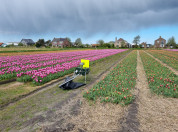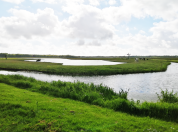Droevendaalsesteeg 10
6708 PB Wageningen
The Netherlands
I love birds! It is one of the reasons why I find it very important to contribute to a more sustainable, green world.
I have a background in ecology and mathematics. My PhD-research was a combination of both: a theoretical study on understanding food web stability via dynamic models. After I completed my PhD, I worked in the the organic food business for some years. Currently I work as a postdoc for 'Living Lab B7', a consortium of NIOO, HAS Green Academy, and Radboud University. Our aim is to enhance biodiversity in the flower bulb region ('Bollenstreek') via our various expertises, together with local stakeholders. My work for LLB7 is a combination of coordinating the program, communicating our results to the outside world, and research on the breeding success and habitat preferences of yellow wagtails in flower bulb fields. Besides my work for LLB7, I am also involved in Nationaal Park Hollandse Duinen.
Outside of work, I am on the board of a local nature organization and I am active for several bird monitoring projects of Sovon. And for reasons I cannot explain, I like to read children's books.


